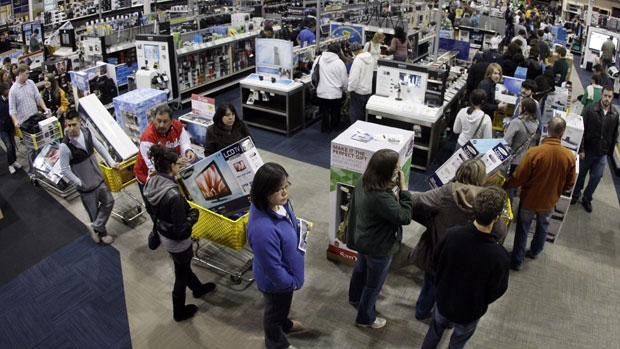Canadians have long paid higher prices for goods than they would south of the border, but now the Canadian government is proposing a new “name and shame” law in order to stem unfair “country pricing.” The federal government wants to give new powers to the Competition Bureau to enable it to investigate the price differences for products sold in Canada and the United States and expose companies who take advantage of Canadian consumers by charging them unfair prices.
“This legislation will not set or regulate prices in Canada,” Industry Minister James Moore said told reporters at a news conference Tuesday.
Instead, the new act–called the Price Transparency Act–which was also tabled Tuesday, will “name and shame” manufacturers and distributors who set prices higher in Canada than the U.S. for the same goods, Moore said.
“It’s called geographic price discrimination. A more blunt way of putting it is to call it … price gouging of Canadian consumers because of where Canadians live.”
Moore announced the filing of the bill in a children’s toy store in Etobicoke, Ontario. He took the opportunity to justify the legislation by what he called “geographic price discrimination.”
He said Canadians pay nearly 15 percent more for products than they would for the same products in the United States.
The minister gave four examples of price differentials to illustrate his point.
A 1.5 liter bottle of shampoo retails for about 30 percent more in Canada than in the U.S.; a 46-inch LED TV is around 13 percent more expensive in Canada; you pay almost double in Canada for an 81 milligrams bottle of aspirin; sports shoes, also, are much cheaper in Buffalo, New York than at the Eaton Center in Toronto.
The minister said that he recognized that some differences in prices were justified.
It was clear that the prices of certain products sold in Canada were based on legitimate operating costs in force on this side of the border, Moore said. These factors contribute in part to price differences, but they are not the only considerations to be taken into account.
Diane Brisebois, head of the Retail Council of Canada, commented on the proposed bill.
“I can assure you, for the thousands of Canadian retailers we represent . . . [the proposed legislation] is a step in the right direction,” said Brisebois.
However, some observers are sceptical that the bill can make much of an impact.
“No retailer in their right mind would want to have a higher price than their competitor. It’s a highly competitive landscape out there,” said Duncan Fulton, senior vice-president at Canadian Tire Corp.
Tires are among the items most frequently cited as overpriced in Canada.
Fulton said that around 10 percent of the difference in prices could be accounted for by factoring in tariffs, duties, labour prices, and shipping costs.
BMO Capital Markets chief economist Doug Porter was also skeptical in his comments, who commented that the strength of the Canadian dollar would play more of a role in U.S.-Canada buying power than “name and shame” policies.
“With the currency back to 87 cents, a very quick calculation finds that prices are, on balance, about the same between the two countries when you take the exchange rate into account,” said Porter.
By Sid Douglas
